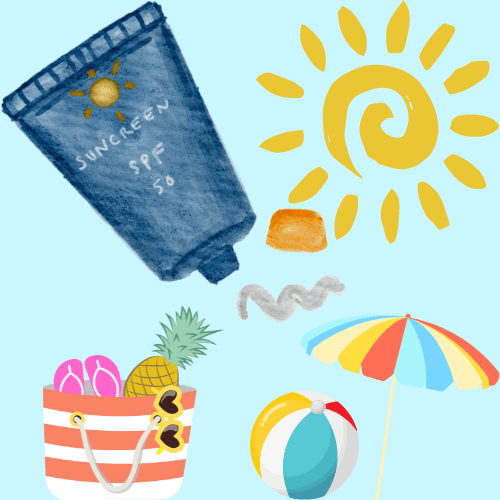

Since the ‘90s there has heavy heavy-handed messaging that there is no safe level of sun exposure in regards to skin cancer. After several decades of this approach, it’s been found that Vitamin D supplements are not a replacement for sunlight and dermatology associations in Europe are starting to take a more moderate stance on safe sun exposure. New research is showing damage to coral reefs and chemicals in many sunscreens are endocrine disrupters and sometimes carcinogenic.
Oxybenzone and Avobenzone are two key UVA and UVB-blocking ingredients found in most American chemical sunscreens. Research shows that both absorb quickly into the bloodstream, that they are endocrine disrupters, and it’s Oxybenzone that causes damage to coral reefs. However, there is insufficient research to show how much of a risk these chemicals are to human health.
Additionally – there are the chemicals that are supposed to be in the product and the chemicals that are not supposed to be in the product. Major recalls and third-party sunscreen testing have found the banned carcinogen benzene in many sunscreens including Neutrogena, SunBum, Aveeno, Banana Boat, and many others. Without third parties doing diligent testing, the industry does not self-regulate itself to use the chemicals on the label.
A Secret Ingredient?
Meanwhile, the FDA has not updated its list of safe ingredients since the 1990s. Sunscreens in Europe and Asia have developed products that use Mexoryl, an ingredient that does not absorb through the skin and simultaneously blocks UVA and UVB rays. Since 2005 Mexoryl has been considered safer and more effective than the chemicals American sunscreens, however, it has not gotten wide FDA approval yet.
How To Buy Sunscreen?
There are two types of sunscreen – mineral (zinc) and chemical. For US sunscreens, a mineral sunscreen that has one ingredient “zinc oxide” such as Project Reef is the safest bet. The EWG watchdog group does not list any chemical sunscreens as safe, but mineral sunscreens are often visible, pasty, and unpleasant to wear. The EWG also does not include any aerosol sprays on their list of safe sunscreens.
The past few years as K-Pop culture has grown, some have turned to ordering sunscreen from Korea and Europe or stocking up on sunscreen while on a vacation. The other advantage to trying foreign brands is that they often come with other skincare ingredients.


